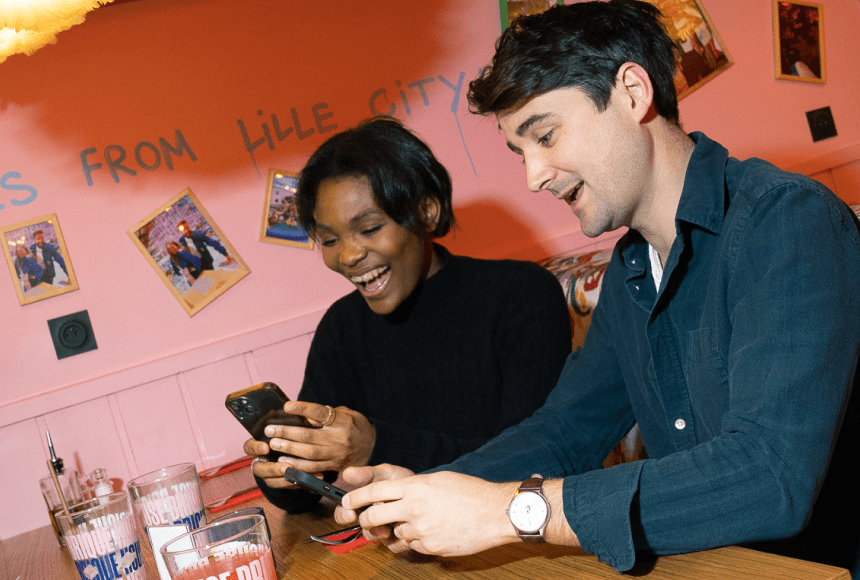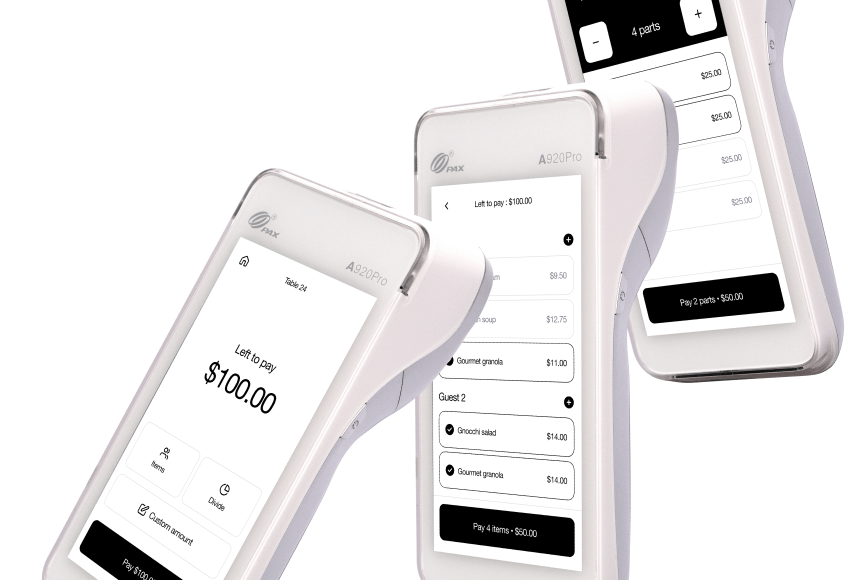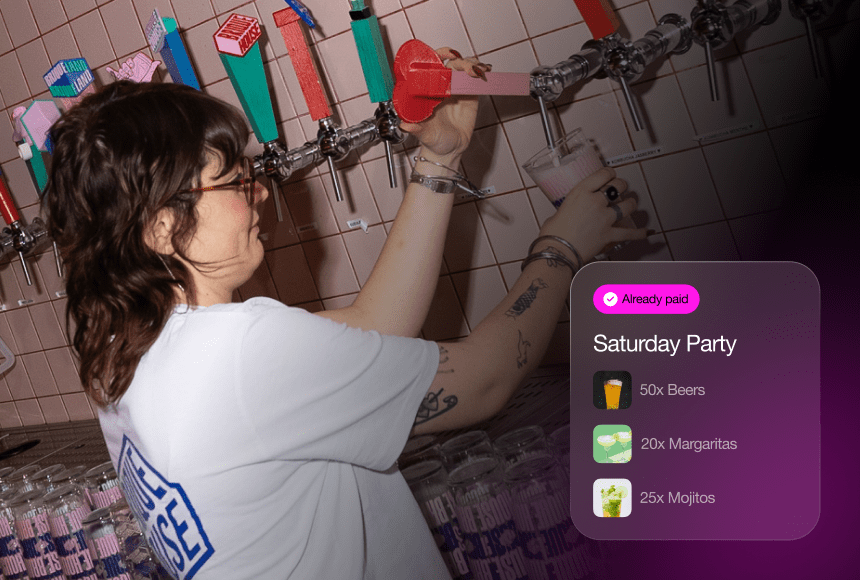
Reimagining the Way Customers Settle Their Bill
The Shift Toward Contactless Payments
For years, restaurants have been searching for ways to cut down on long checkout times and free up their staff for more meaningful interactions. The pandemic only accelerated that trend, with customers growing increasingly comfortable using their smartphones for everyday tasks—including paying for their meals. QR codes, once reserved for marketing flyers or airline check-ins, have stepped into the spotlight to reshape the dining experience.
According to the National Restaurant Association, about 70% of diners say they’re looking for quick, contactless ways to pay the bill (source). This desire for convenience and speed has turned QR code payments from a niche curiosity into a must-have feature for many establishments. Gone are the days of waiting for a server to bring the check, rummaging for credit cards, and walking over to a register. Now, the humble QR code is taking center stage, freeing up restaurants to handle more guests while keeping customers happy.
In this article, we’ll dive into how QR code payments work, why they’re fast becoming the go-to payment option for diners, and the specific ways you can harness them to streamline your restaurant’s operations.
How QR Code Payment Actually Works
Before discussing why QR code payments make such a splash, let’s talk about the nuts and bolts of how they function.
- Scanning the code: Each table or check presenter is equipped with a unique QR code. When the diner is ready to pay, they open their smartphone’s camera (or a dedicated QR scanning app) and hover it over the code.
- Accessing payment details: Almost instantly, a link pops up on their screen. Tapping that link brings them to a secure payment page—sometimes integrated with the restaurant’s point-of-sale system. This page displays their bill, complete with itemized charges.
- Choosing payment method: Guests select whether they want to pay by credit card, mobile wallet, or other digital payment methods. Systems like sunday even allow them to leave a tip or split the check if needed. Everything is done in a few taps.
- Final confirmation: Once payment is processed, a receipt is emailed or texted to the customer, and your restaurant’s system updates automatically to reflect the cleared bill. No fuss, no confusion.
Essentially, QR code payment transforms your diners’ smartphones into portable checkout stations. Instead of a slow, multi-step dance, you get a smooth, frictionless handoff from the customer to your point of sale.
Key Benefits for Restaurants
It’s easy to see how scanning a code could speed up the checkout, but the real benefits run deeper. Whether you manage a family diner or a bustling steakhouse, QR code payments can solve a range of operational headaches.
1. Faster Table Turnovers
Dragging out the payment process can jam up your entire workflow—especially during busy lunch or dinner rushes. With QR codes, the moment guests finish their meal, they can pay without waiting for a server to drop off a check or process a card. That means they leave quicker, opening the table for your next group. In high-volume spots, shaving even five minutes off each table turn can result in more covers served and a direct boost to your bottom line.
2. Reduced Labor Pressures
With QR code payments, servers spend less time running back and forth to the terminal to split checks or retrieve a card. That frees them up to handle more tables, give personalized recommendations, or focus on customers who might need extra attention. In an industry where labor costs and staff shortages are a constant worry, any tool that eases the strain can make a big difference.
3. Enhanced Customer Experience
Today’s diners value convenience. They order rides, shop online, and manage their finances with just a phone tap. Offering a quick, intuitive payment process aligns perfectly with those expectations. According to Restaurant Business Online, simplifying checkout can push diners to leave higher tips or drop positive reviews (source), both of which help build a solid reputation in a competitive market.
4. Instantaneous Data Synchronization
When a customer pays via QR code, the transaction details flow directly into your POS. This eliminates any confusion or risk of error if a server were to manually type in amounts. You get real-time visibility into sales figures, tip amounts, and average check size. Over time, these insights can guide menu updates or promotional strategies, since you’ll see exactly what’s resonating with diners.
Setting Up QR Code Payments in Your Restaurant
Convinced that QR code payments might be the right move for your eatery? Let’s walk through the steps to get started. While each system has its own specifics, the general framework looks like this:
- Pick a platform: Shop around for a payment service that aligns with your needs. Are you looking for simple QR scanning, or do you also want features like digital ordering, loyalty tracking, or integrated tipping? Many solutions, such as sunday, offer all-in-one setups.
- Link to your POS: Make sure the platform you choose syncs seamlessly with your existing point-of-sale system, so transactions and inventory updates happen in real time.
- Generate QR codes: Typically, you’ll receive or create unique codes that correspond to each table or check. These can be printed as stickers, displayed on stands, or even integrated into a stylish table design.
- Train your staff: Walk your team through the process of scanning, explaining how tips, refunds, or splits work. They should be ready to guide customers who are less tech-savvy.
- Promote the feature: Let your guests know that QR code payment is available. Table-top signs, menu notes, or a quick mention when you seat them can go a long way in encouraging adoption.
Within days of rolling out a well-implemented system, you’ll likely spot a difference in how swiftly checks get settled—particularly during high-traffic hours.
Addressing Security and Trust
Whenever money changes hands, security is top of mind. Fortunately, QR code payment solutions typically employ encryption, tokenization, and PCI-compliant transaction handling. In plain terms, this means sensitive data—like credit card numbers—never sits unprotected.
Nevertheless, reassure your diners about these protections. A simple sign that says “Your payment is fully secure—we use modern encryption standards” can ease any lingering worries. Show them you take their financial safety seriously, just as you do with the quality of their food.
Making the Most of Integrated Tipping
Tipping can be tricky—servers may worry about losing out if the table pays through an unfamiliar device. But the best QR code payment systems actually boost tipping because they present clear, well-designed tip suggestions at checkout. Diners who might otherwise be on the fence about how much to leave often select one of the recommended tip amounts with a single tap.
- Preset tip percentages: Nudging guests with 15%, 18%, or 20% prompts can increase the average tip. Some diners might even opt for a custom higher amount if they had exceptional service.
- Option to skip: If a diner doesn’t wish to tip or prefers to type in a custom number, that choice remains. Giving them control fosters trust.
Be sure to highlight how easy it is for guests to add a tip, and let your staff know how the new setup works. Employees will appreciate not having to handle and reconcile as much physical cash. Meanwhile, the digital records also make tip distribution more transparent.
Real-Life Example: The Busy Lunch Spot
Picture a popular downtown café that sees heavy foot traffic during lunch. On top of standard orders, they get a lot of pick-ups and quick bites. Before implementing QR code payments, a long queue formed at the register around noon each day, with 15 anxious customers crowding the counter. Servers hustled to ring up each transaction, leading to errors and frustrated diners.
Once the café placed QR code stickers on every table and near the pick-up station, everything changed. Dine-in guests simply scanned the code to pay whenever they finished, and to-go customers did the same upon arrival, scanning a code displayed on the glass door. Suddenly, the line at the register mostly vanished. The café saw an uptick in average tips—likely because customers found it simpler to select a default tip option—and staff felt less frazzled by the noon rush. Customer reviews reflected the upgrade, praising the quick checkout and modern approach.
This scenario highlights how removing the “payment friction” can transform a hectic midday crush into a smoother operation. Multiply that effect across a full week’s worth of lunch rushes, and you see how small time savings add up to big wins.
The Data Advantage: Insights at Your Fingertips
Beyond speed and convenience, QR code payments give you the chance to glean valuable customer data. With a few clicks in your dashboard, you can see trends such as:
- Popular ordering times: Is your restaurant busiest between noon and 1 pm, or do evening rushes overshadow lunch? Real-time data helps with staff scheduling.
- Recurring customers: If your payment system links to a loyalty program, you can track how often specific diners return. Knowing top repeat visitors can guide special offers or VIP perks.
- Average spend per diner: The system can automatically calculate daily or weekly averages, letting you gauge how successful any menu changes or promotions are.
These insights make it easier to adjust your business strategy on the fly, whether that means a new happy hour, targeted marketing, or a tweak to the menu pricing. Knowledge is power—and QR-based systems supply that knowledge in near real time.
Beyond Payment: Building a Contactless Ecosystem
While QR code payments often begin as a way to replace the physical check, many restaurants realize they can expand the same tech for the entire dining journey. With one scan, diners can access the menu, place their order, pay the bill, tip your staff, and even leave a quick review on platforms like Google. Done properly, each step flows seamlessly into the next, letting you tie digital orders to your POS automatically and keep track of your inventory or table availability in real time.
This is especially convenient if you already have a robust digital presence: perhaps you run online promotions or collect email addresses for a newsletter. By integrating everything under one digital umbrella, you build continuity for your brand, simplifying the path from marketing to actual sales.
Common Hurdles (and How to Overcome Them)
Despite the many upsides, transitioning to QR code payments can feel daunting. Below are a few typical hurdles and strategies to tackle them:
- Customer skepticism: Some diners worry about scanning “strange” codes. Counter this by displaying a short, reassuring message like “Simply open your camera—no extra apps needed.” Staff can also offer help if anyone seems unsure.
- Network issues: If your Wi-Fi or cellular coverage is spotty, scanning might take longer than expected. Investing in stable internet or a backup hotspot ensures the process remains quick.
- Staff training: A short demonstration can do wonders. Let your team test the system themselves. Once they’re comfortable, they’ll be confident answering customer questions.
- Branding concerns: If you worry the technology might feel too impersonal, consider adding personal touches—like a “Thank you for dining with us!” message after payment, or custom colors that match your restaurant’s vibe.
Where Do You Go from Here?
QR code payment isn’t just a trend—it’s a modern solution that aligns with customer expectations for quick, hassle-free dining. Whether you’re a casual brunch café or a high-end steakhouse, offering diners the freedom to handle payment on their own device can alleviate common bottlenecks and free up your staff for higher-value interactions.
The payoff? Speedier table turns, increased average check size (thanks to easy tipping), and fewer back-end hassles for your team. Add in real-time data and integrated loyalty options, and it’s clear why so many restaurants are adopting this method. It’s not just about slapping a code on a table and calling it a day—you’ll want a system that ties everything together, from your POS to your marketing strategies. And once you do, you’ll likely wonder how your restaurant ever managed without it.
Ultimately, QR code payment marks the next logical step in restaurant tech. By embracing it, you’re sending a message that you value your customers’ time and want to give them a seamless, modern dining experience. And in an industry where every minute and every guest counts, that’s a message well worth sending.
Find out more today
Drop us your details below and we’ll reach out within the next 24h
“Check please” is a thing of the past.
With our integrated QR codes your customers pay in seconds, straight from their table.



